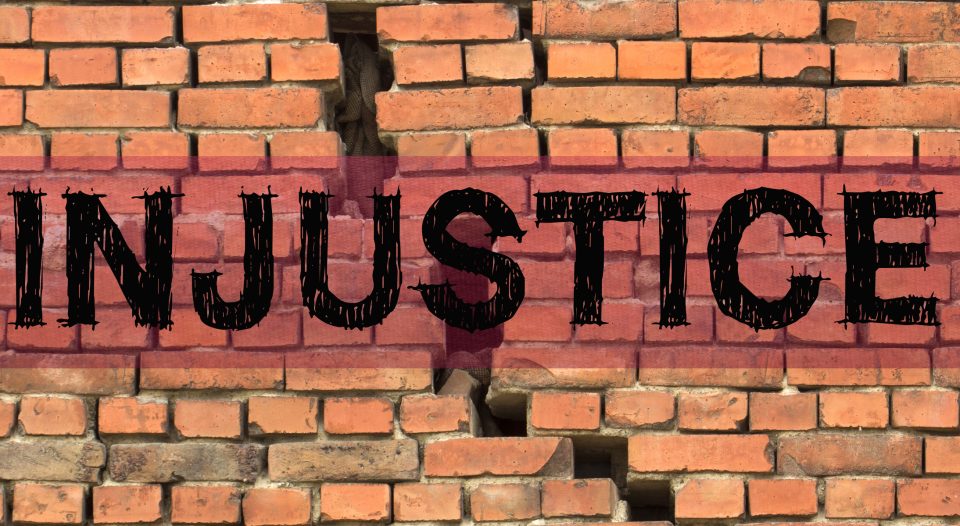Lectionary for Sept. 29, 2024
19th Sunday after Pentecost
Esther 7:1-6, 9-10; 9:20-22; Psalm 124;
James 5:13-20; Mark 9:38-50
My wife, Sarah Driver, is a justice trainer for congregations and denominations that deal with spiritual abuse by clergy and/or leaders. When she teaches congregations about the work of justice, she frequently uses the Gospels and the book of Esther because of the practical instructions on communal justice found therein. This week the lectionary texts allow me to do the same.
In Mark’s Gospel, Jesus has strong words for people who abuse relatively powerless folks. Whether we translate it as “little ones” or “lowly ones” in verse 42, those who abuse them, Jesus says, will prefer to have been drowned in the sea over facing God’s judgment. Then he launches into a gruesome description of preferable options. It is better for a person to remove a sinful hand than to be thrown into Gehenna. It is better to remove a sinful foot than to be thrown into Gehenna. It is better to remove a sinful eye than to be thrown into Gehenna.
Jesus isn’t talking about random sins, however. This difficult teaching is coming out of his previous message about not causing lowly ones to stumble. Jesus sums up this section by insisting that the disciples be at peace with one another (50). This peace is not the mere absence of hostility but the presence of justice, equity and shalom.
Hundreds of years earlier, a writer framed the story of Esther around historical injustice and corruption. King Ahasuerus sold the Jews living in Persia and the 127 provinces of the empire into the hands of Haman, who planned to commit genocide. Haman attempted to bribe the king into allowing the mass-murder, and Ahasuerus, without even asking which people-group Haman intended to destroy, granted permission (Esther 3:8-11).
With less than a year to prevent annihilation, Esther’s relative Mordechai switched into high-gear justice advocacy mode on behalf of an entire people who had been sold to slaughter. He started with a public protest about injustice by weeping in sackcloth and ashes at the entrance to the king’s palace. Soon his protest went international, with people in the 127 provinces following his lead (Esther 4:1-3).
The book of Esther gives a solid primer on the steps of justice training for those facing abuse: protest, educate, advocate/lobby, make it personal for those in power and, finally, resist.
When Esther became aware of the mass protest, her first instinct was to end the spectacle and demand that the protesters act in more modest ways (4). So often this is the command of those in or adjacent to power—to demand reasonableness in the face of genocide. Yet, Mordechai refused to act as if everything was OK because it manifestly was not! Instead, he educated the queen about the dire stakes.
This move from attention-getting to educating is crucial in justice work. And when Mordechai gained the attention of someone who could effectively lobby the king, he knew what to do. Mordechai had the receipts, literally. Producing a copy of the genocidal agreement that Haman and Ahasuerus had sent out, he instructed Esther about the exact amount of “contributions” that Haman had donated to ensure that royal policies went his way (7-8). Mordechai’s advocacy and education efforts paid off, and Esther took up the cause.
Esther interceded with the wicked king on behalf of herself and her people. When the time was right, she told Ahasuerus about Haman’s planned genocide. Whereas previously Ahasuerus had been all too happy to accept money to allow innocent people to be slaughtered, Mordechai’s and Esther’s key work in overturning injustice was to show the king how it affected him personally. They demonstrated how bribery, corruption and murderous injustice affected people whom Ahasuerus cared about (Esther 7:3-6). It was only then that the king took steps to undo the evil that he had allowed. The king ordered Haman to be executed. He also gave express permission that Jews across the empire did not have to sit idly by and endure violence directed toward them because they had the right of anticipatory self-defense (Esther 8:11).
Jesus insists that those who hurt marginalized folks would rather mutilate themselves than face God’s judgment for the abuse they committed. The book of Esther gives a solid primer on the steps of justice training for those facing abuse: protest, educate, advocate/lobby, make it personal for those in power and, finally, resist. God expects us to produce a harvest of justice (Isaiah 5:7). Let us be the body of Christ together with the marginalized. As German theologian Dietrich Bonhoeffer proclaimed, “We are not to simply bandage the wounds of victims beneath the wheels of injustice, we are to drive a spoke into the wheel itself.”





